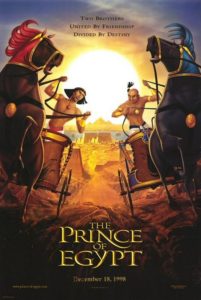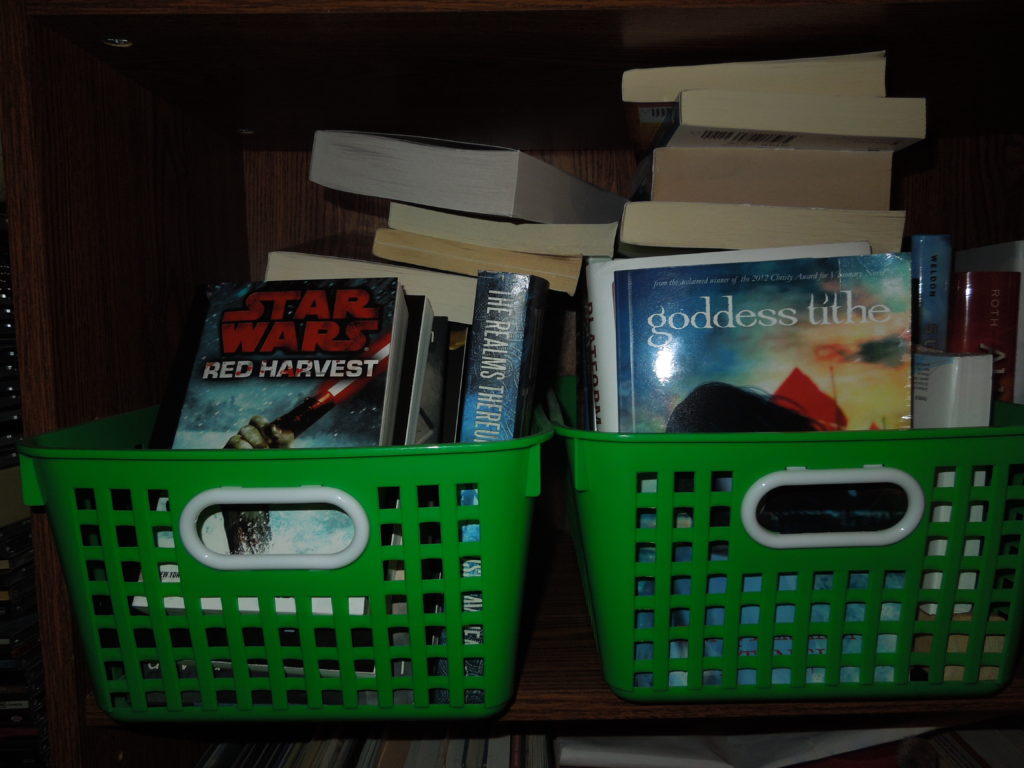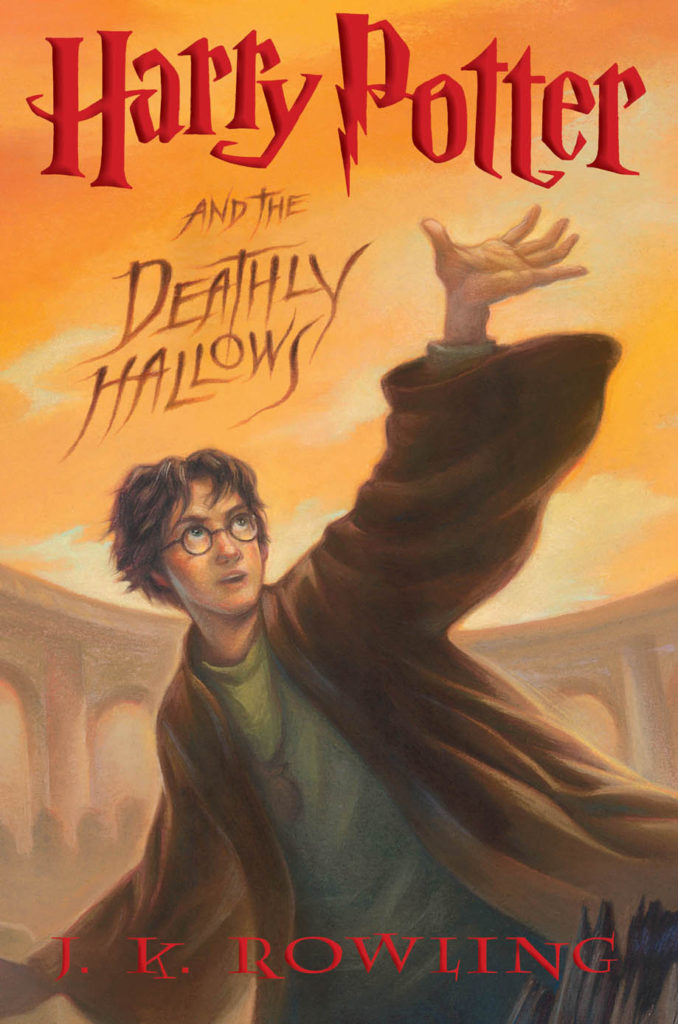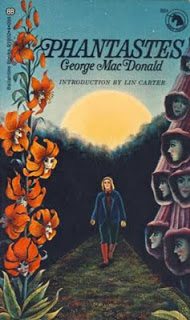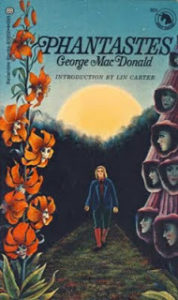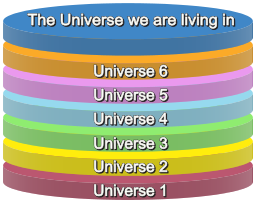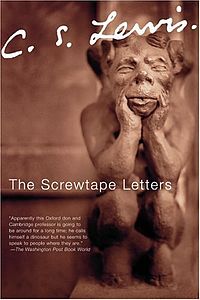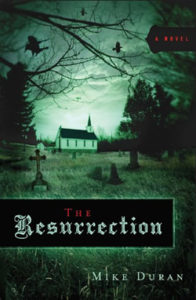 Advocates for “mature” Christian fiction often point to the Bible as proving their point. They point out that the Scripture is full of violence, sex, and contains some examples of course language. Indeed, the case can be made that this is true. But does the Bible really fit the mold it is being forced into? Is it really the same as an R-rated, mature material?
Advocates for “mature” Christian fiction often point to the Bible as proving their point. They point out that the Scripture is full of violence, sex, and contains some examples of course language. Indeed, the case can be made that this is true. But does the Bible really fit the mold it is being forced into? Is it really the same as an R-rated, mature material?
What is “mature content”?
I don’t know that I’ve heard a good definition of the phrase presented in terms of fiction written by Christians. Jeff Gerke’s warning for the old Hinterlands imprint would give us a starting point.
Hinterlands books may contain vulgarity, profanity, nudity and/or sexual content, but never for gratuitous purposes.
Of course, this doesn’t draw any lines. Sexual content could mean anything from a couple indicating they are going to have sex to a full graphic description of the act. But based on Jeff’s statements from his guest article on SpecFaith back in January of last year, he relates the term as the equivalent of an R-rated movie in content.
Many Christians need to avoid R-rated movies, but some Christians can watch such movies and not stumble. That doesnât mean anything about who has more or less worth to Christ, because thatâs the same for both. It just means that there are Christians who can handle, and even desire to explore, stories with this sort of content. They can be grittier and, in some senses, more realistic.
When writers and readers talk about mature content, their boundaries would usually coincide with an R-rating on a movie.
So mature content means it is not G-rated, PG-rated, or even PG-13-rated. So what crosses the line from a PG-13 to an R? From the Motion Picture Association of America’s rating descriptions.
Sex:
More than brief nudity will require at least a PG-13 rating, but such nudity in a PG-13 rated motion picture generally will not be sexually oriented. . . . An R-rated motion picture may include . . . sexually-oriented nudity . . .
Violence:
There may be depictions of violence in a PG-13 movie, but generally not both realistic and extreme or persistent violence. . . . An R-rated motion picture may include . . . intense or persistent violence . . .
Profanity/Vulgarity:
A motion pictureâs single use of one of the harsher sexually-derived words, though only as an expletive, initially requires at least a PG-13 rating. More than one such expletive requires an R rating, as must even one of those words used in a sexual context. . . . An R-rated motion picture may include . . . hard language . . .
The language boundary would fit movies or book without any adjustment, but sexual and violence boundaries are different. To translate from visual media to printed media, it is obvious the difference is explicitness. That is, if you can read the same level of detail to form a picture as an R-rated movie, then you’ve crossed over into mature content.
For example, in Peter Jackson’s adaptation of The Lord of the Rings into film, he had to keep it at a PG-13 rating. So he could show heads getting chopped off, but he couldn’t show blood spewing out as would be more realistic (from his comments on the extended version commentary).
So is the Bible R-rated?
It certainly contains sexual situations, violence, and some would say cussing. But do they cross the line into R territory?
If we take the above boundary, the level of detail, especially in relation to violence and sexuality, would determine if it is an R or PG-13. The more a book would show rather than tell, the more likely it is to cross over into mature content.
Let’s examine it in relation to the Bible.
Sex:
There are plenty of incidences of sex in Scripture, but none that are described in detail. The closest one gets to that is the Song of Solomon. However, it does so in an allegory, keeping the curtain’s closed, so to speak. Indeed, it has been interpreted in other ways than speaking of sex.
What you usually have, however, is very much telling. So-and-so knew his wife, and she conceivedâtype statement. No where in Scripture does it give a graphic, detailed account of a sex act. On the sex category, it would not be consider sexually-oriented nudity, and so not R-rated.
Violence:
Most all references in Scripture concerning violence is told, not shown. We don’t get depictions of blood gushing out, or other such details. The most one gets is bowels:
Now this man [Judas] purchased a field with the reward of iniquity; and falling headlong, he burst asunder in the midst, and all his bowels gushed out. (Act 1:18 KJV)
There are two or three more instances in the OT of this description. It is still pretty telly, but does give more detail that paints a clearer picture in the reader’s mind. Certainly much less detail than a novel describing the event might have.
But does that make it “realistic and extreme” violence? It is still too telling and not showing to be a realistic depiction, which would describe the bursting open, the blood, descriptions of the guts, and how the person feels either experiencing it or watching it. To simply say “his bowels gushed out” isn’t much different than saying someone cut off his head. No description, no R-rating.
Profanity/Vulgarity:
While Scripture doesn’t drop the equivalent of an F-bomb, there is some “harsh language” going on, as someone details on a forum post. I’m not totally convinced that the people then would have thought of them as profanity (too easy for us to overlay our culture’s values onto theirs).
For instance, Jesus calls the Pharisees, vipers. One might consider that name calling, but I don’t think it’s an explicative or profanity. Several listed in the article are questionable.
But it is a difficult task to sort out. Some of those could have been considered cuss words of the day. Like the use of the word, “dung.” He claims it is the equivalent of a couple of our words for it used as an explicative. However, it is not clear that it is being used as an explicative in the verse he cites:
Yea doubtless, and I count all things but loss for the excellency of the knowledge of Christ Jesus my Lord: for whom I have suffered the loss of all things, and do count them but dung, that I may win Christ… (Philippians 3:8, KJV)
Paul may have simply meant it literally, not as an explicative. That said, Paul does give the judaizers, in his letter to Galatians, some harsh words:
I would that they that unsettle you would even go beyond circumcision. (Gal 5:12 ASV)
Oh that those who disturb you would even castrate themselves! (Gal 5:12 EMTV)
Based on the above, it is possible that some words and phrases, at the time, might be considered profanity or vulgarity.
That said, none of those words today would give a movie an R-rating. Even the castration comment. If any of them were considered profanity back in the day, they certainly don’t today. Even if we could point to some profanity, we have no way of knowing how strong it was considered then. It takes some strong language to get an R-rating. Minor cussing won’t do it.
There are no F-bomb equivalents in Scripture.
The Scripture would be rated PG-13.
Based on my assessment, one could not make the case that the Scriptures would garner an R-rating, as it is simply too much telling, and very little showing on both sex and violence. Any cuss words, if they could be labeled such, are likely mild in the Bible’s culture, and certainly mild to non-existent in today’s.
If the criteria for declaring something mature content is to earn an R-rating, the Scriptures don’t make the cut. This is not the mature content you are looking for. Consequently, those who wish to hold up the Bible as an example and support for mature content in fiction will find little to grab hold of here. Merely saying it happened does not make it R-rated.
What a PG-13 rating does tell us is the Bible can be used as support to mention people having sex, violence, and even minor, infrequent cussing. As some have said accurately, the Bible would not be approved to be sold in CBA stores if it were just a book like any other. Too many instances of sex and the occult to make it past the censors.
While I may be saying that one cannot point to the Bible as a justification and example of mature content, I’m not saying this excludes the possibility that mature content can’t be warranted and permissible to write and read, within limits. It isn’t inherently anti-Biblical, though on an individual basis, that depends on what all is shown. There are other arguments for and against mature content, and I’ve not dealt with those here. So don’t assume from this I’m anti-mature content.
Would you define mature content differently? Do you have examples from Scripture that you believe would be classified as worthy of an R-rating that I’ve missed?
 The Clive Staples Award for Christian Speculative Fiction is once again sponsored by Speculative Faith and the Realm Makers Conference for Speculative Fiction. Like last year, the winner will be announced at the conference, but this year, rather than being held in the fall, the two-day event will take place at the end of May.
The Clive Staples Award for Christian Speculative Fiction is once again sponsored by Speculative Faith and the Realm Makers Conference for Speculative Fiction. Like last year, the winner will be announced at the conference, but this year, rather than being held in the fall, the two-day event will take place at the end of May. 






































